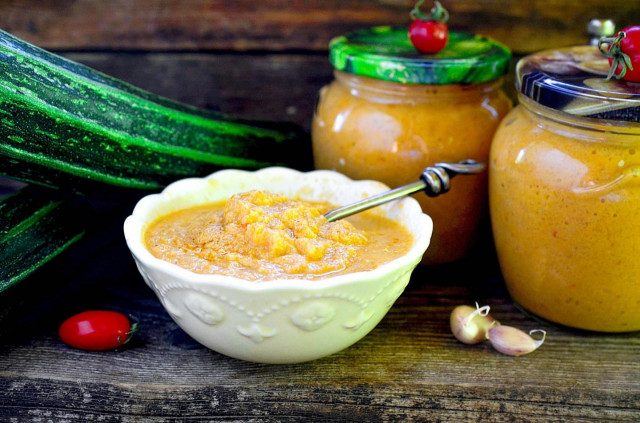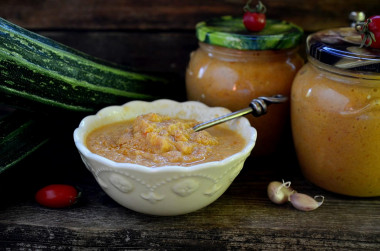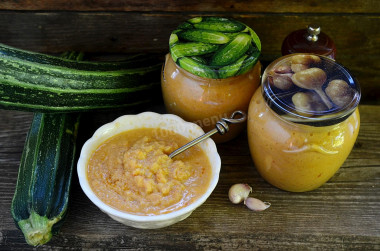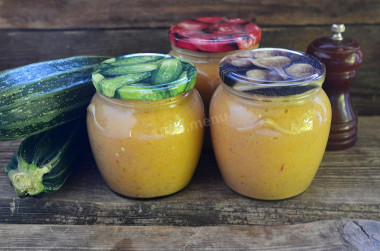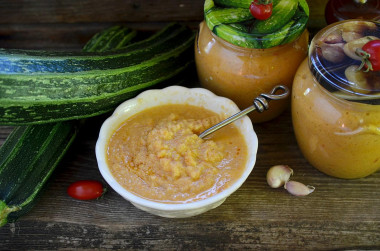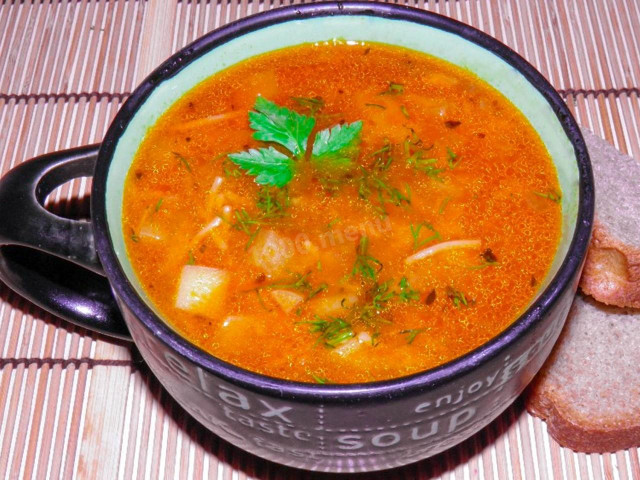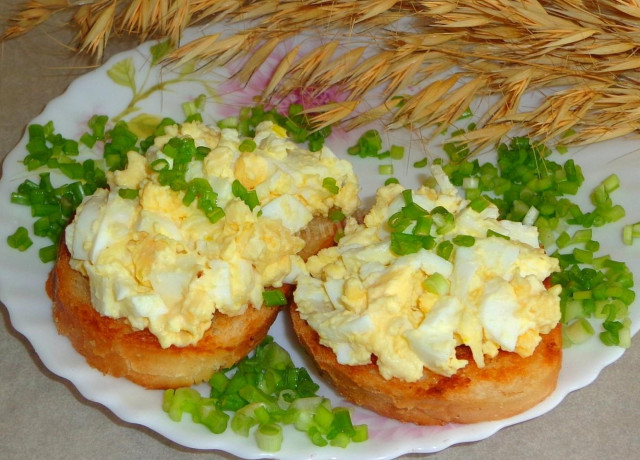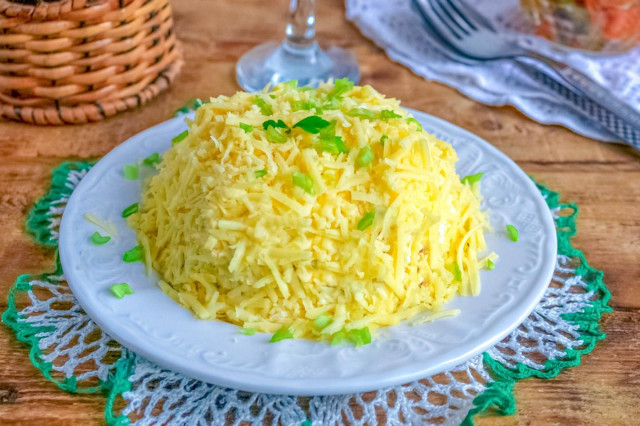Composition / ingredients
Step-by-step cooking
Step 1:
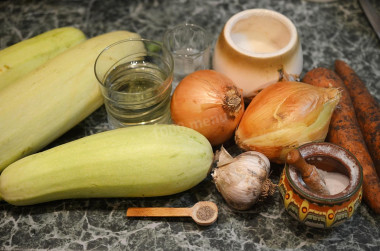
How to make squash caviar in a slow cooker? Prepare all the necessary products. Zucchini for caviar are suitable for any: white-fruited, yellow-fruited and zucchini. It is only desirable that the zucchini be young: with a thin skin and small seeds.
Step 2:
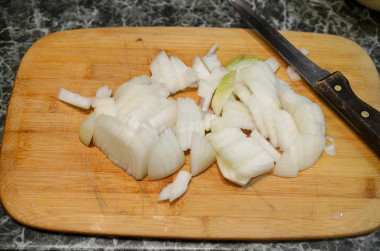
Peel and dice the onion.
Step 3:
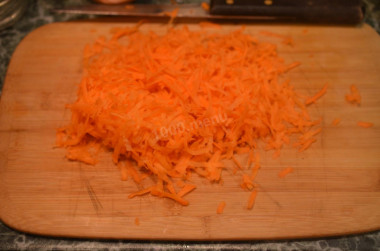
Peel and grate the carrots.
Step 4:
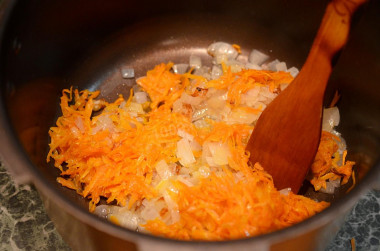
Put onions and carrots in the bowl of the slow cooker, turn on the Frying mode, add vegetable oil and cook for 15 minutes.
Step 5:
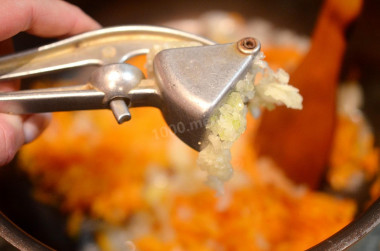
Add garlic. I passed the cloves through the press, but you can also cut them arbitrarily - we will still grind all the ingredients.
Step 6:
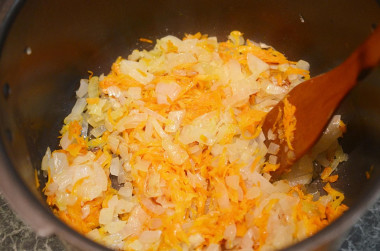
Fry everything together for another 5 minutes.
Step 7:
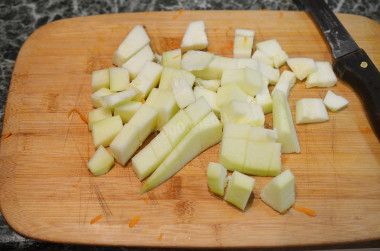
Zucchini, if necessary, peel and remove large seeds, cut into cubes.
Step 8:
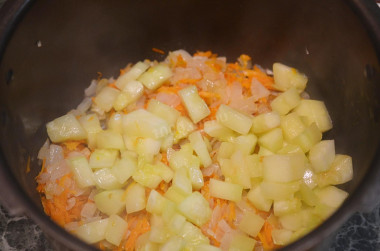
Add a slow cooker to the bowl and cook everything together for 1 hour, turning on the Stewing mode.
Step 9:
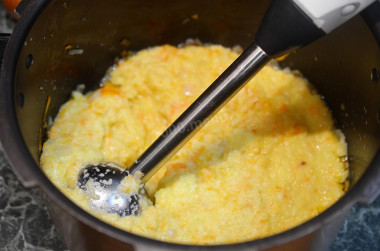
Puree the vegetables until smooth. If necessary, you can put them through a meat grinder.
Step 10:
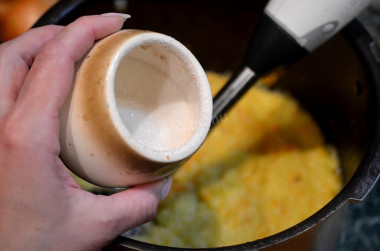
Add sugar.
Step 11:
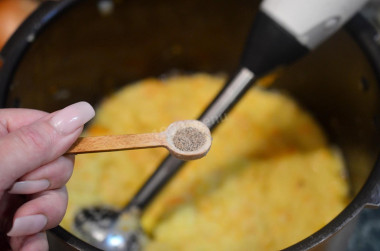
Then pepper.
Step 12:
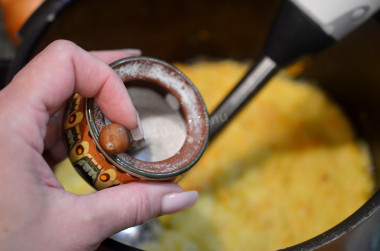
Salt the caviar.
Step 13:
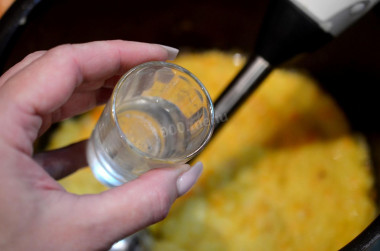
Vinegar is coming in. Cook for another 30 minutes on the Stewing mode.
Step 14:
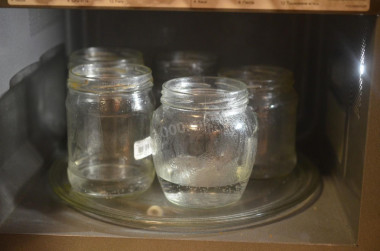
Sterilize the jars in any convenient way. I put jars with a small amount of water in the microwave for 5-7 minutes. But you can sterilize them in the oven at 100 degrees for about 30 minutes or hold them over steam. It is enough to boil the lids for 5 minutes
Step 15:
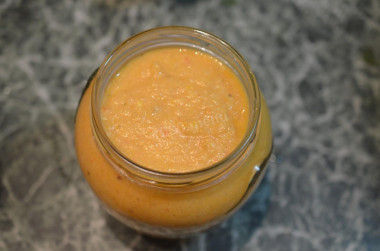
Put the caviar in jars and close the lids tightly or roll up. Sterilization is not required, the workpiece is stored in a cool place.
Step 16:
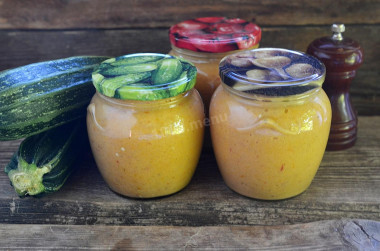
Bon appetit!
Remember that spices such as salt, sugar, as well as vinegar and its substitutes are used in recipes for winter preparations not only for taste, but primarily as preservatives. Therefore, in no case should you reduce the concentration of salt and sugar, and also replace vinegar (essence) with a weaker concentration than indicated in the recipe, otherwise vinegar (salt / sugar) will not show their preservative properties and the workpiece will be spoiled.
Which zucchini will work best? Choose young fruits with tender skins. Wash them and peel them. It is not necessary to cut off a very thin skin. If you use more mature zucchini, cut off the rough peel and cut out the middle with the seeds.
If you are new to canning, have little experience in home preparations, it is better to be safe and
sterilize cans of vegetables, even if the recipe says the opposite
. This guarantees you that the banks will not swell during storage if you did something wrong, did not report something/shifted or violated the technology.
Remember that banks swell more often for the only reason:
excess gases are formed in them
. And those, in turn, appear because
they are isolated by microorganisms trapped in the workpiece
.
Caloric content of the products possible in the composition of the dish
- Zucchini - 23 kcal/100g
- Carrots - 33 kcal/100g
- Dried carrots - 275 kcal/100g
- Boiled carrots - 25 kcal/100g
- Garlic - 143 kcal/100g
- Ground black pepper - 255 kcal/100g
- Granulated sugar - 398 kcal/100g
- Sugar - 398 kcal/100g
- Wine vinegar (3%) - 9 kcal/100g
- Vinegar 9% - 11 kcal/100g
- Balsamic vinegar - 88 kcal/100g
- Apple vinegar - 14 kcal/100g
- Vinegar - 11 kcal/100g
- Vegetable oil - 873 kcal/100g
- Salt - 0 kcal/100g
- Onion - 41 kcal/100g

